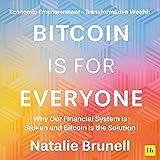
January can be a bumpy month for investors. This month, stocks could see volatility related to the Georgia run-off election and the Covid-19 vaccine rollout. But despite these potential hiccups, Henderson says that long-term stock market prospects remain positive. He also believes that now is a good time for investors to focus on what they can control within their portfolios, including reexamining their own investment strategy and making sure it’s on track with their goals.
Investors are often reminded of a theory known as the “January effect.” This market phenomenon suggests that stocks tend to gain ground in January. Some analysts say that the reason has to do with investors harvesting capital losses in December and then re-buying those securities in January, artificially boosting prices. Others suggest that New Year’s resolutions to begin investing are behind the trend. Still other analysts point to the fact that many people receive cash bonuses in January, which they may then invest in stocks.
Regardless of the cause, the January effect is one of several market anomalies and calendar effects that are frequently cited. However, the significance of these factors has diminished over time. Among other things, the advent of high-frequency trading has made it more difficult to exploit and profit from momentary market inefficiencies. Other reasons for the diminished importance of the January effect are that investors became aware of the phenomenon and began to adapt their strategies accordingly, thus reducing its impact.
Another reason for the lessened prominence of the January effect is that similar observations have not consistently occurred outside the United States, suggesting that the theory is specific to the country’s markets and not indicative of global market behavior. Furthermore, if investors are responding to a perceived positive January performance by buying more stocks, then the positive January effect is self-reinforcing.
This month’s earnings season could be especially volatile if the results come in below expectations, as has been the case in recent quarters. Investors will be assessing whether the companies they own are delivering on their financial and growth promises. Nevertheless, Henderson expects that the overall market will benefit from the positive economic data and the upcoming presidential inauguration, which usually brings in an uptick in consumer spending.
Among the sectors and individual securities that have historically performed well in January are energy, technology, consumer cyclicals and utilities. These industries are expected to have strong fundamentals in 2021, and they can also provide diversification when a portfolio contains too much of other sectors that are more sensitive to economic conditions.
This month, Morningstar’s Style Box showed that the distinction between value and growth stocks remains wide, as large- and mid-cap growth names continue to dominate their value counterparts. That said, the gap is smaller than it was in 2021, when growth dominated over value by record margins. Over longer time frames, though, the relative performance of value and growth stocks remains quite close. That’s because large- and mid-cap growth shares still have a substantial advantage over value stocks when it comes to their relative price/earnings ratios.









